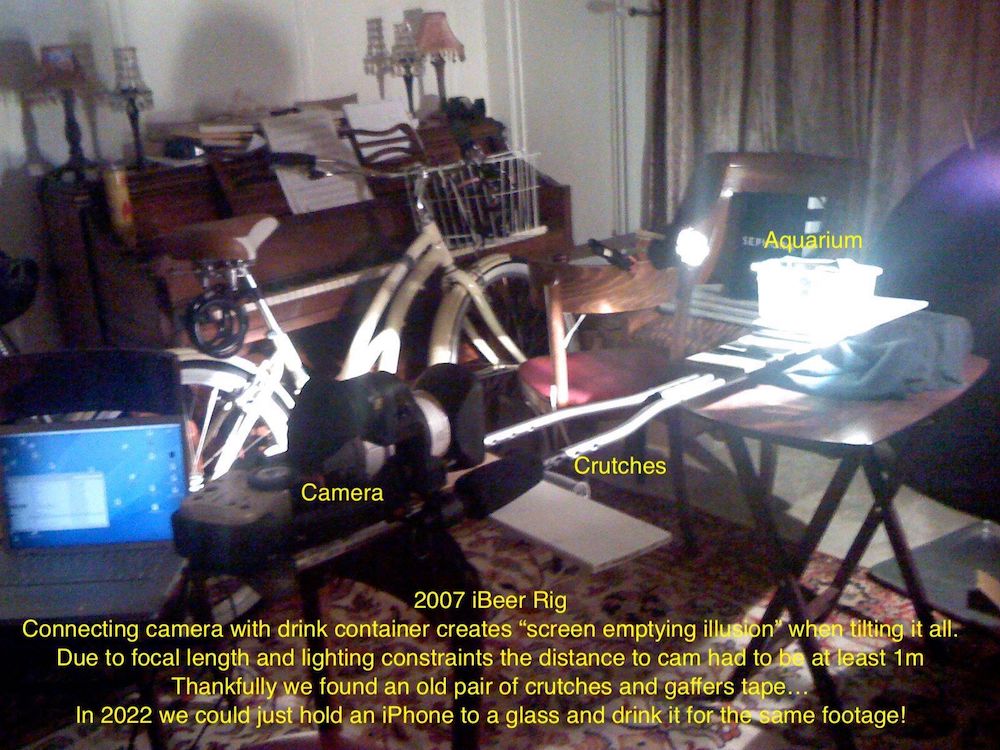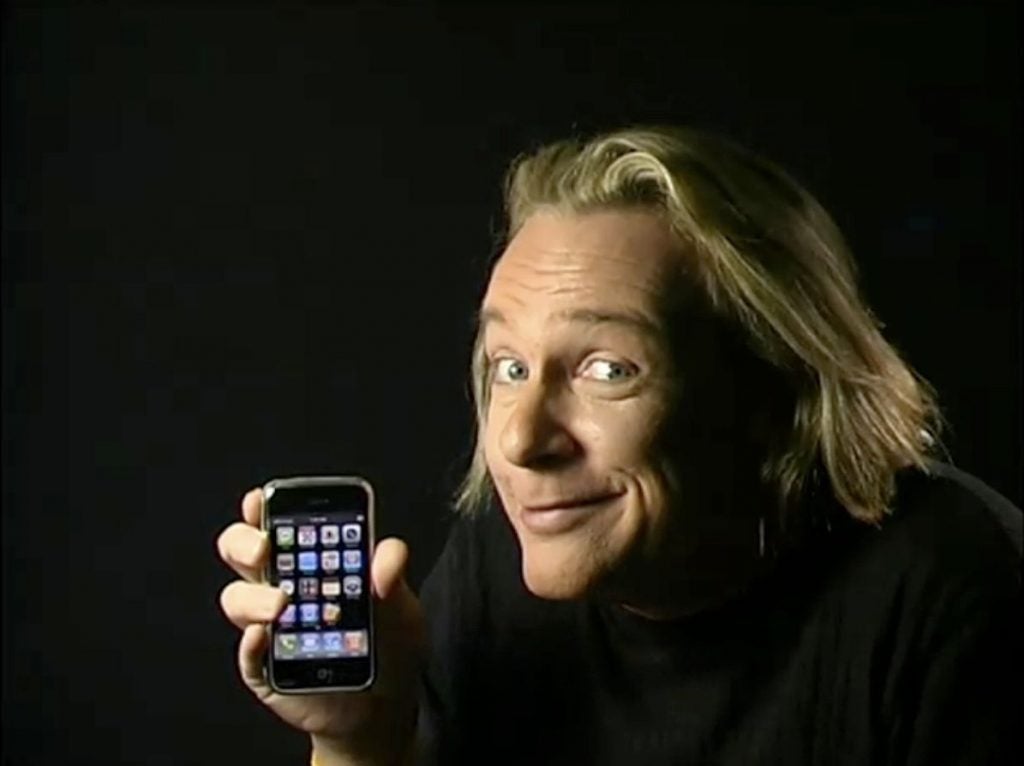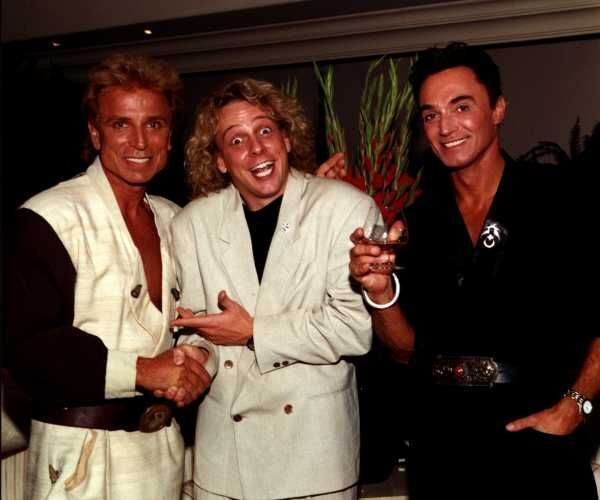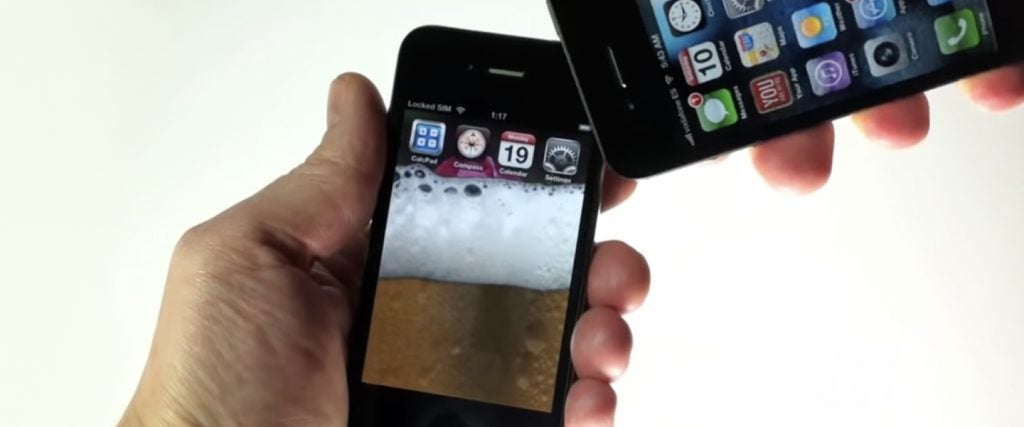On July 10, 2008, Steve Jobs teased the opening of Apple’s highly anticipated App Store. “The quality and the sophistication of the applications you can write for the iPhone is in a different class,” he told the New York Times. The next day, the App Store launched with more than 500 apps curated for the iPhone’s groundbreaking technology, but only the app of the highest quality and most sophistication would rise to the top: iBeer, an app that kind of made it look like your phone was a glass of beer.
In the year leading up to the App Store’s debut, Apple sought out developers to create software that put the iPhone’s prowess on display. One of those developers was down-and-out, 37-year-old magician Steve Sheraton. “Apple started scouting for developers, and they approached me because I’d made a YouTube video where I made the phone look like a glass of beer,” Sheraton recalls. “They wanted me to make an app out of that because they obviously thought it would show off the phone pretty well.”
To be sure, Sheraton’s path to creating an app that would be featured in tandem with the new App Store was several years in the making. The idea itself harkened back to Sheraton’s career in magic. “Anything that uses visual effects to cause shock or humor is up my alley,” he tells me. “I built the very first iteration of this mechanism for the Palm Pilot, called E-spresso, which turned the little monochrome screen into a cup of coffee — but because it didn’t have an accelerometer, I just made it a video that you could time with your drinking motion.”

Though he thought the idea was “the hottest thing since sliced bread,” it never really caught on. “It just went back into the drawer and stayed there,” he says. “About 10 years later, the iPhone came out.” The bright colors, high-definition screen and aforementioned accelerometer made it the perfect vehicle for Sheraton’s phone-as-beverage trick. The only problem was third-party developers weren’t allowed to create software for iPhones unless they were “jailbroken,” or modified to remove Apple’s software restrictions.
“Hardly anyone was jailbreaking their phones, so it was impossible to reach critical mass,” Sheraton says. “So I basically recreated Palm Pilot E-spresso, where the iPhone shows a video of the drink and you time your actions to match the video.” This time around, however, Sheraton decided to use beer instead of coffee. “I figured beer was more attractive than coffee, but also, I’m a [recovering] alcoholic, so my life was pretty much guided by booze back then,” he continues.
Sheraton uploaded a video of himself “drinking a beer” on his iPhone to YouTube. “I was dead broke, just trying to get by, living on a friend’s couch, and suddenly, the video was getting millions of views, which was a lot in 2007,” he says. “People were begging me to get this ‘thing’ on their phones — they didn’t even have a word for ‘app’ yet.”
Before the App Store was even a concept, Sheraton started selling the beer-drinking video file for $2.99. “It was just a little video file that people had to hardwire in and download via iTunes,” he says. “But I probably made around $2,000 a day for the longest time from that.”
By the time Apple came knocking, Sheraton knew he was onto something — he just needed to figure out how to code the video to Apple’s new device. “I have a lot of experience in film and photography, and I wanted to make the beer look as realistic as possible,” he explains. “So rather than doing animation, I chose to make assets from looped videos and image sequences — that’s why the foam looks so real.”
Sheraton then programmed the looped videos and image sequence to interact with the iPhone’s accelerometer. “The accelerometer is constantly measuring the phone’s angle versus the horizon, so by tethering the line between the liquid and the foam to the horizon, you can move your phone in any direction and it looks like it’s filled with liquid,” he tells me. “From there, the rest is just a series of ‘if statements,’ so ‘if the tilt of the phone goes beyond X,’ then the program should switch to different loops of foam and liquid that make it look like the phone is emptying.”

Sheraton called it iBeer, developed under the name of his company Hottrix, and priced it again at $2.99. “We shot to first place [in the App Store] on the very first day and stayed there for about a year,” he says. “Apart from its visual humor and sort of appealing to the lowest common denominator, iBeer was a large success because it allowed people to show their friends what the phone was capable of. You could show them maps and all these kinda geeky things, but iBeer was easier to understand and a funny, fun way to show off the iPhone’s accelerometer and its bright screen with super lifelike colors.”
But iBeer’s success extended beyond mere downloads. The New York Times, Fortune and Time all listed iBeer among its “must-have iPhone apps.” Meanwhile, a 2008 article in CNN Money proclaimed, “This clever app serves up a never-ending brew,” while perfectly outlining its elegance: “Tilting the phone causes beer to drain out, and shaking it creates foam.”
Whatever the reason for its sustained popularity, at nearly three bucks a download, iBeer created a serious pile of cash for Sheraton and his team at Hottrix. “The amount of money that was coming in was just so over-the-top. During our heyday, we were making $10,000 to $20,000 a day,” he says. “And we went all out. We always rented exclusive spots, like this place in Barcelona that was $6,000 a month. Then, next thing you know, we were going to antique stores and buying things to fill the house. It really just unwinded from there.”
“The app’s sudden massive popularity and that lifestyle — coupled with all the publicity and stress that comes with it — is an avalanche that can destroy people,” he continues. “And when you have a problem with alcohol, all those problems are exacerbated.”
Adding to the stress was the fact that Coors Brewing Company developed a nearly identical app to iBeer called “iPint.” Hottrix sued Coors for $12.5 million, claiming the company committed copyright infringement that led to “irreparable damage and lost profits.” Sheraton couldn’t speak on the matter, but per CBS News, the case was settled on “confidential terms.”
By 2010, iBeer faded from the App Store’s most downloaded charts, replaced by burgeoning tech juggernauts like Facebook, Skype and Fruit Ninja. “A good joke can only be told so many times. Plus, the mystery of the technology itself shifted, and people’s tastes changed. It all went hand-in-hand,” Sheraton says, adding that he ultimately decided to step away and relinquished the app’s IP rights to Hottrix.

“As a magician, I liked creating and inventing the act, but repeatedly performing it just kinda killed me,” he says. “The app was similar — creating it and bringing it to the top was great fun, but then I had to move on and do something else.”
Today, Sheraton, now 52, lives on a farm in Spain where he tends to his family and creates mobile apps for magicians. “It’s a niche market,” he says. “Everybody knows everybody so there’s less of the stress and drama that big money brings. I originally quit doing magic because I had anxiety issues and couldn’t perform anymore, so now I get to continue inventing and being creative while serving the needs of an industry I love.”
All of which is to say, Sheraton is more than happy with where he landed. “iBeer is the burp that grew bigger than me,” he concludes. “I’m glad to be hiding out with my family and fruit trees. I feel a lot more comfortable doing this than having to deal with an app that looks like a beer.”

